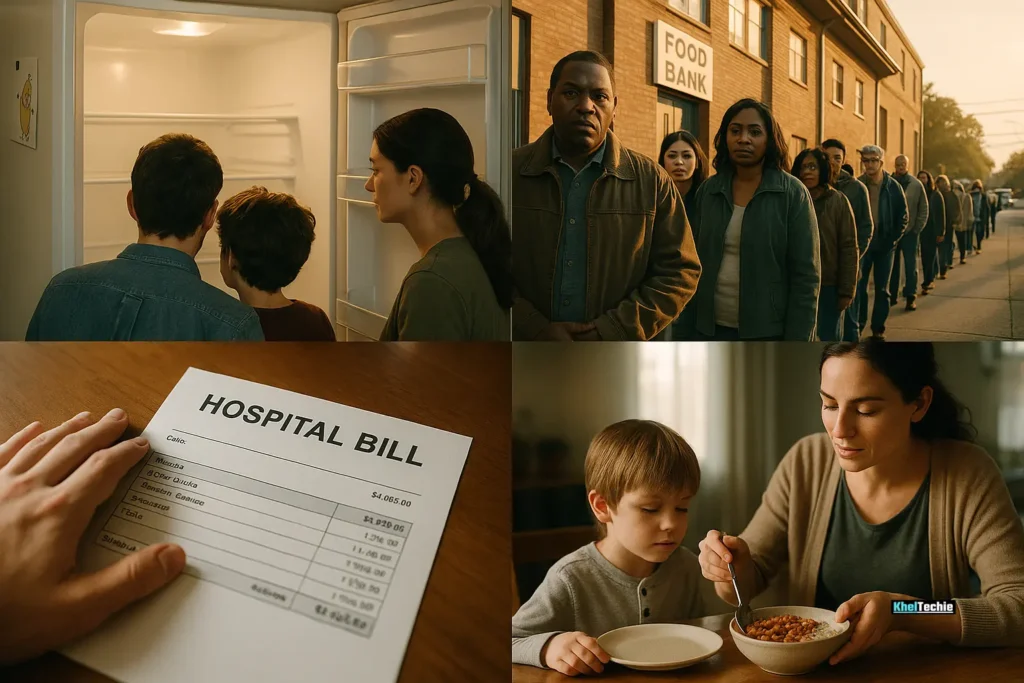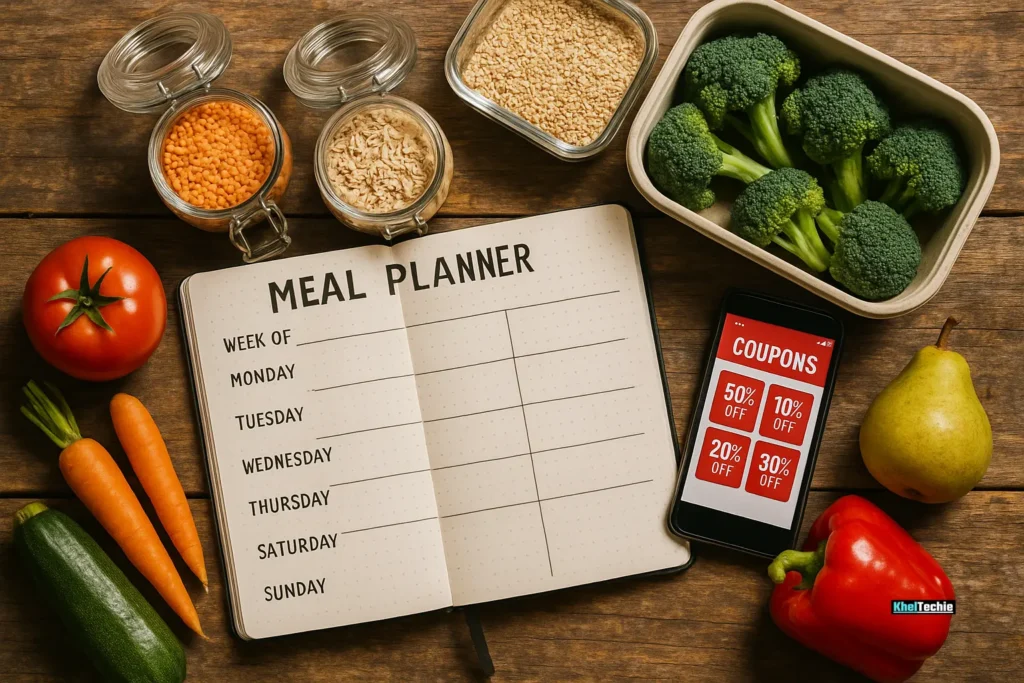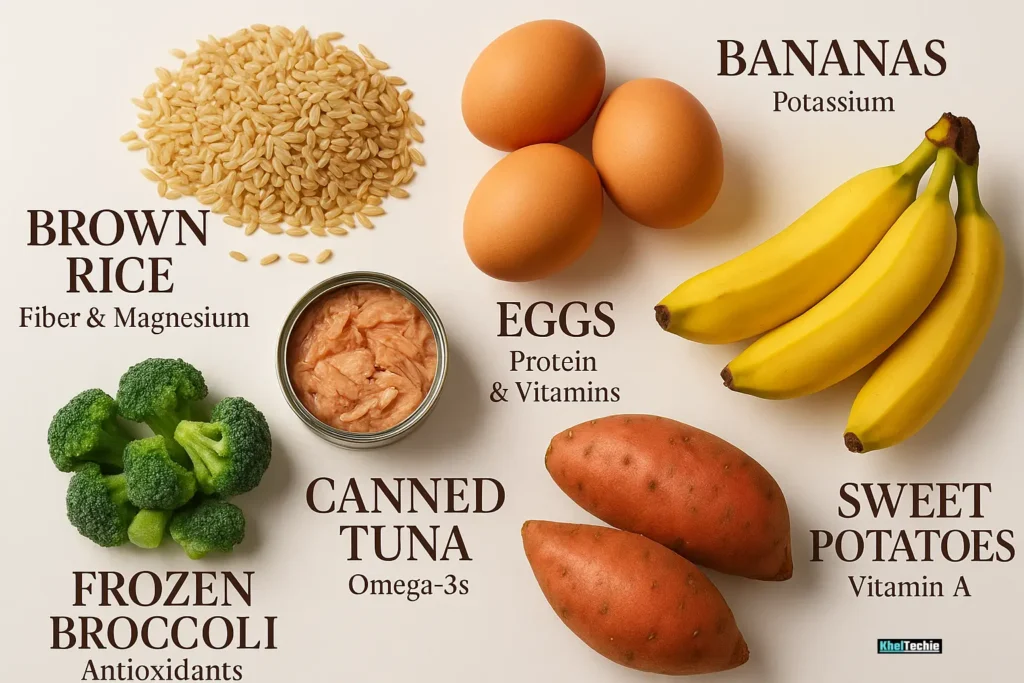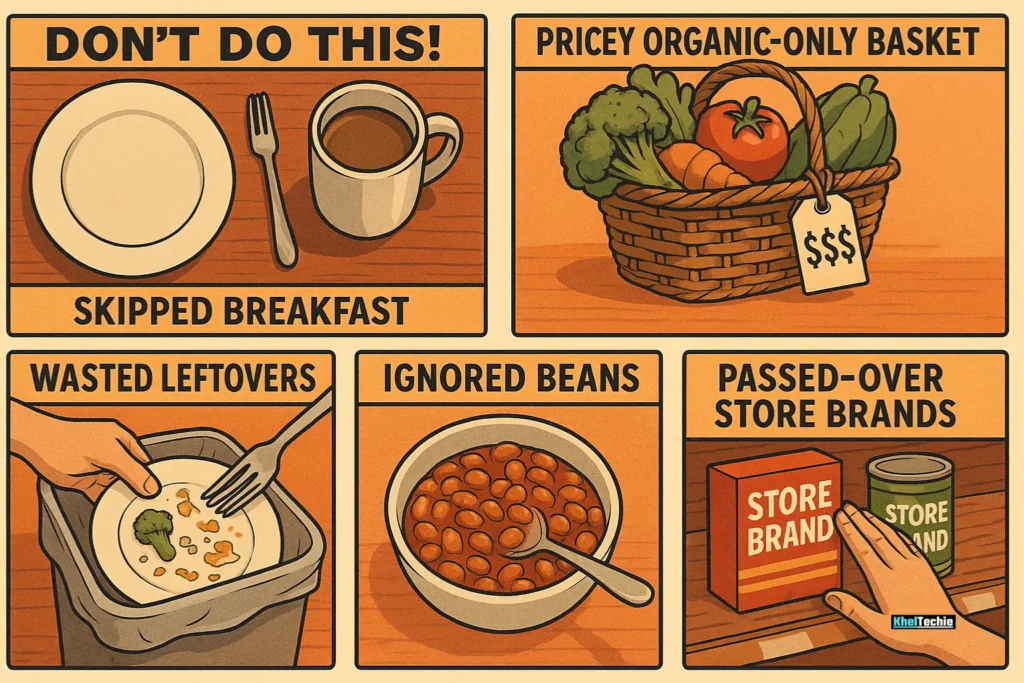How to Eat Healthy on a Budget in the US|Smart Hacks That Save You Money
The Struggle Is Real!
In today’s fast-paced world, maintaining a healthy diet often feels like a luxury. With grocery prices soaring and time becoming increasingly scarce, many Americans find themselves reaching for quick processed meals that are both unhealthy and expensive in the long run. But here’s the good news, eating healthy doesn’t have to drain your wallet. With a bit of planning and smart choices, you can enjoy nutritious meals without overspending.
In this guide, we’ll walk you through how to eat healthy on a budget in the US using practical steps, expert-backed tips, and real-life hacks that actually work.
Also read – High-Protein Breakfast Ideas for Busy Mornings

What Does Eating Healthy on a Budget Really Mean?
Eating healthy on a budget involves making food choices that are both nutritious and cost-effective. It’s about maximizing the nutritional value of every dollar spent, focusing on whole foods, and minimizing waste. Think of it as getting the most bang for your buck while nourishing your body. Eating healthy on a budget means:
- Choosing nutrient-dense foods.
- Avoiding expensive processed items.
- Planning meals wisely.
- Shopping smartly based on sales and seasons.
It’s not about skipping meals or going hungry, it’s about maximizing value while fueling your body properly.

Why Eating Healthy on a Budget Matters in US
Eating healthy isn’t just a lifestyle trend, it’s becoming a survival skill in today’s economy. According to the USDA, over 47.4 million Americans faced food insecurity in 2023. That includes nearly 14 million children. Families are struggling to buy fresh fruits, vegetables, and lean proteins, not because they don’t want to eat healthy, but because rising prices and reduced food aid have made it nearly impossible.
At the same time, poor diets are taking a massive toll on US nation’s health and its wallet. According to the CDC, chronic diseases like diabetes and heart disease cost the U.S. $4.5 trillion every year. What’s even more frustrating? Many of these illnesses are completely preventable with better nutrition. But when families are forced to choose between cheap processed food or going hungry, their health inevitably suffers.
That’s why eating healthy on a budget matters, it’s not just about saving money at the grocery store. It’s about giving everyday people the power to protect their health, reduce medical bills, and create a better future. Whether you’re a student, a single parent, or living paycheck-to-paycheck, smarter food choices today can lead to big wins tomorrow for your body, your bank account, and your peace of mind.

Step-by-Step Guide to Eating Healthy on a Budget
Let’s dive into actionable, step-by-step strategies to help you save money while staying healthy.
Step 1: Plan Your Meals Ahead of Time
Meal planning is your secret weapon. It prevents impulse buys and reduces food waste.
- Create a Weekly Menu: Outline your meals for the week, focusing on recipes that utilize similar ingredients to reduce waste.
- Make a Shopping List: Stick to your list to avoid impulse purchases.
- Check for Sales and Coupons: Use store flyers and apps to find discounts on healthy staples.
Use apps like Mealime or Paprika to organize weekly menus and generate shopping lists.

Step 2: Know Which Foods Give You the Most Nutrition for Your Dollar
Not all healthy foods cost the same. Focus on these budget-friendly powerhouses:
| Food Group | Affordable Options |
|---|---|
| Proteins | Eggs, canned tuna, dried beans, chicken thighs |
| Veggies | Frozen broccoli, carrots, cabbage, sweet potatoes |
| Fruits | Bananas, apples, oranges, frozen berries |
| Grains | Oats, brown rice, quinoa, whole wheat bread |
These foods are packed with vitamins, fiber & protein and they won’t drain your wallet.
Step 3: Shop Smart = Sales, Bulk, and Seasonal Produce
Timing and strategy make a big difference. Being strategic about where and how you shop can lead to significant savings.
- Buy in Bulk: Purchase non-perishable items like grains, beans, and nuts in bulk to save money over time.
- Choose Store Brands: Often, store-brand products are cheaper and comparable in quality to name brands.
- Shop Seasonally: Fruits and vegetables are more affordable and flavorful when in season.
A head of broccoli costs less than pre-cut florets and freezing extra portions saves time and money later.

Step 4: Cook More at Home
Eating out or ordering takeout adds up fast. Cooking at home gives you control over ingredients and portion sizes.
- Batch Cooking: Prepare large quantities of meals and freeze portions for later use.
- Use Simple Recipes: Focus on recipes with minimal ingredients to keep costs down.
- Limit Dining Out: Reserve eating out for special occasions to save money..
Try simple dishes like chili, stir-fries, or baked sheet pan dinners.

Step 5: Cut Down on Processed Foods
Processed snacks and sugary drinks may seem cheap, but they’re often loaded with empty calories and hidden costs.
Swap These Out:
- Bottled juices → homemade smoothies
- Chips → air-popped popcorn or roasted chickpeas
- Soda → infused water or unsweetened tea
Your taste buds will adjust and your wallet will thank you.
Step 6: Use Discount Stores and Coupons
Stores like Aldi, Trader Joe’s, and Costco offer great deals on healthy staples.
Savings Hacks:
- Check online coupon sites like Honey or RetailMeNot.
- Sign up for store newsletters for exclusive deals.
- Look for generic brands, they’re often the same product at half the price.

Step 7: Grow Your Own Food (Even If You Live in a City)
You don’t need a farm to grow food. Herbs, sprouts and small vegetables can thrive indoors or on a balcony. Plant-based proteins are often more affordable than animal proteins.
Start Small:
- Basil, mint, or rosemary in pots.
- Microgreens from seeds.
- Tomatoes or peppers in containers.
This hobby can cut grocery costs and bring joy to your daily routine.

Common Mistakes to Avoid When Eating Healthy on a Budget
Avoiding these pitfalls can keep your healthy eating plan on track and affordable.
❌ Skipping Breakfast to Save Money
Going hungry leads to poor food choices later. Grab a banana and peanut butter toast, it’s quick and under $1.
❌ Buying All Organic
Organic labels don’t always mean healthier. Prioritize the ‘Clean 15’ and skip the ‘Dirty Dozen’ unless organic is affordable.
❌ Not Using Leftovers
Leftover chicken? Turn it into soup or wraps. Rice and beans? Mix in veggies for a quick bowl.
❌ Ignoring Store Brands
Store-brand products are often made by the same companies as name brands, just cheaper.
❌ Forgetting About Beans and Lentils
These plant-based proteins are super cheap and full of fiber and protein. Try black bean tacos or lentil soup.
Also read – Healthy Swaps for Your Favorite Unhealthy Foods

Final Thoughts: Take the First Step Today
Eating healthy on a budget in the US isn’t about perfection, it’s about progress. Start with one tip today, like planning your next three meals or swapping out soda for infused water. Every small change adds up And remember, your health is worth investing in, even if you’re watching every penny.
Have a favorite budget-friendly recipe or hack? Share it below in the comments! And if you found this guide helpful, please share it with someone who needs it. Let’s build a community of smart, healthy eaters, no matter our budget.
Frequently Asked Questions
Can I eat healthy on a tight budget?
Absolutely! With careful planning and smart shopping, you can enjoy nutritious meals without overspending.
Are frozen fruits and vegetables nutritious?
Absolutely, Frozen fruits and veggies are picked and frozen at peak ripeness, locking in nutrients. They’re often cheaper than fresh, too.
What are the cheapest sources of protein?
Top picks include:
Canned tuna ($1–$2 per can)
Eggs (~$0.20 each)
Dried beans and lentils (~$1 per pound)
Chicken thighs (~$1.50–$2 per pound)
Should I buy organic?
Only when it makes sense. Stick to the EWG’s Clean 15 list and opt for conventional versions of the Dirty Dozen unless organic fits your budget.
How can I save money on meat?
Buy in bulk, choose less expensive cuts, and incorporate more plant-based proteins into your diet.
How do I avoid food waste?
Use the FIFO method: First In, First Out. Label leftovers and use up older items first. Freeze extras.
Can I eat healthy on a tight schedule?
Yes! Batch cooking, slow cooker meals, and 15-minute recipes are lifesavers. Apps like Yummly or Tasty can help.
What are the best budget-friendly breakfast ideas?
Try:
- Overnight oats with fruit
- Scrambled eggs with toast
- Greek yogurt with granola
- Smoothies with frozen fruit
All under $2 per serving!
How do I shop healthy on a limited income?
Stick to your list, shop sales, and prioritize whole foods. Use SNAP benefits if eligible, many farmers’ markets accept them.
Where can I find free healthy eating resources?
Check out:
USDA’s MyPlate (myplate.gov)
CDC’s nutrition guides
Local community centers or food banks
Can I eat healthy on $50 a week?
Yes! Focus on staple items like eggs, frozen veggies, oats, canned beans, and bananas. Plan meals around what’s on sale.





Pingback: How To Read Food Labels For Healthy Choices: Smart Shopper